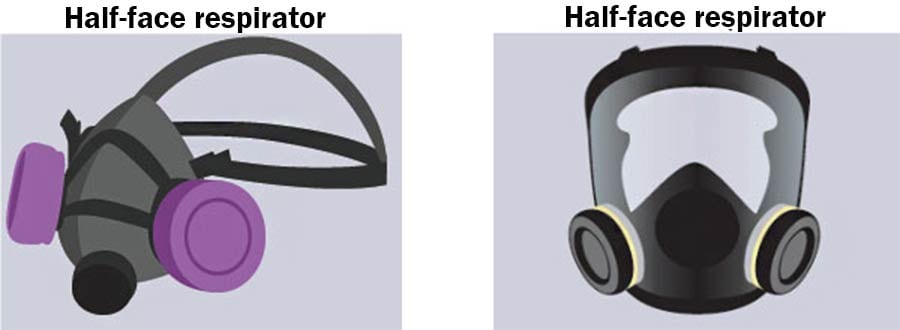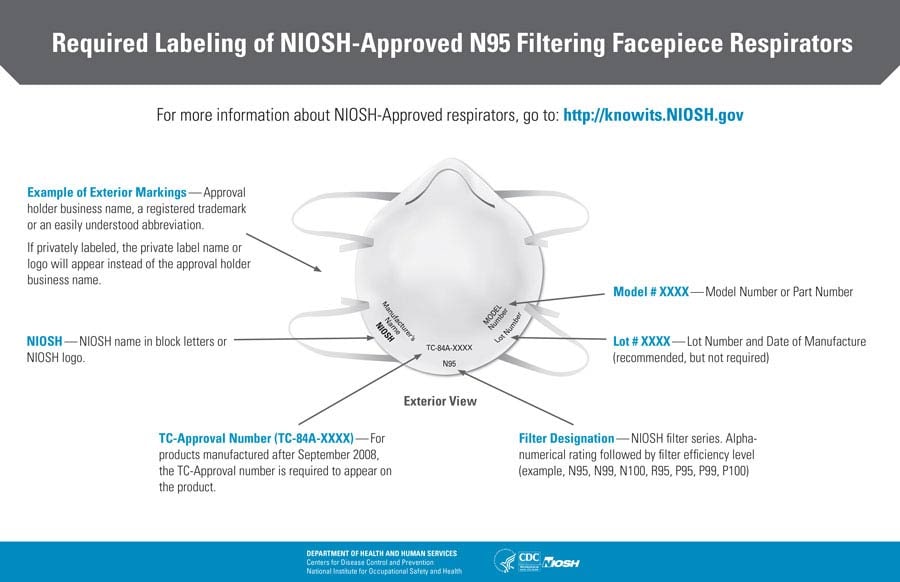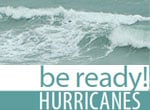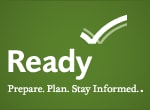Respiratory Protection for Residents Reentering and/or Cleaning Homes that Were Flooded
DISASTER RECOVERY INFORMATION
Was your home flooded? If it was, and you could not completely dry it out (including things like your furniture and rugs) within 24-48 hours, you probably have mold. Remember–even if you do not see or smell mold on clothing, drywall, furniture, cardboard boxes, or books, it may be hidden under or behind items like cabinets, carpet, cushions, or even inside your home’s walls.
Mold can cause many health effects. For some people, mold can cause a stuffy nose, sore throat, coughing or wheezing, burning eyes, or skin rash. People with asthma or who are allergic to mold may have severe reactions. People with weakened immune systems or chronic lung disease may get infections in their lungs from mold.
- If you have a respiratory condition like asthma or COPD or a weakened immune system stay away from moldy spaces.
- Children should not take part in disaster cleanup work.
If there is mold in your home (or you suspect that mold growth has occurred), protect your mouth and nose against breathing in mold by wearing at least a disposable, NIOSH-approved N-95 filtering facepiece respirator (often called an “N-95 respirator” or “N-95 mask”). You can buy respirators at your local home supply store. Look for a respirator approved by CDC’s National Institute for Occupational Safety and Health (NIOSH).
If you plan to spend a lot of time (more than 4 hours) removing moldy items or doing work like ripping out moldy drywall, think about wearing a reusable half-face respirator or full-face respirator. You can get these at home supply stores, too.

Source: https://www.cdc.gov/niosh/npptl/pdfs/FY17_N95infographicWhatAreAPR.pdfpdf icon [PDF 238 – KB]
You can find more information about using respirators at the bottom of this page and in OSHA’s general respiratory protection guidanceExternalexternal icon, https://www.cdc.gov/niosh/npptl/pdfs/FY17_N95infographicWhatAreAPR.pdfpdf icon [PDF – 238 KB], and at https://www.cdc.gov/niosh/npptl/topics/respirators/disp_part/respsource.htm.
NIOSH-approved respirators are not designed for children.
Wear goggles, gloves, boots, long sleeves and long pants, too. More information about how to protect yourself and your loved ones in any moldy site is available here:
Before you enter your home or any other building, you and your family should wait until local authorities tell you it is safe.
If you have to be around mold or dust (which can contain mold),
- Limit your contact with the mold or dust as much as you can.
- Use wet mops or vacuums with HEPA filters instead of dry sweeping.
- Wear a respirator like a NIOSH-approved N-95 respirator that protects against dust in the air.
- If you wear a respirator at work and have received training and fit testing there, use the same make, model, and size of respirator at home as you do at work.
- Make sure the respirator fits properly, even if not fit-tested, by following the instructions on the package. To get the most protection users should be clean-shaven in the areas where the mask seals to the face.
- Avoid touching the outside of the respirator so you do not get mold on your hands. When you finish using the respirator, throw it away so that children and others will not touch it. NIOSH-approved N-95 respirators should be thrown away whenever they are damaged, soiled, or are noticeably harder to breathe through. Follow the manufacturer’s recommendations for specific information on when to replace the respirator you are using.
- Take a break every hour or so (away from the moldy site) to drink some water and to get a break from wearing the respirator.
- Stop working and contact a doctor or other medical provider if you have trouble breathing or any other trouble when you wear a respirator.
- Read more about what to wear when entering a home or building with mold damage at What to Wear Before Entering a Home or Building with Mold Damagepdf icon [PDF – 362 KB]
You can find more information about building safety at these websites:
You do not usually need to wear a respirator when you are outside. However, when you are in a very dusty environment (for example, if you are shoveling debris, sweeping dust, or using power equipment), then you may want to wear a NIOSH-approved N-95 respirator.
- CDC/NIOSH tests and certifies respirators for use by workers to protect them against workplace hazards. Respirators certified by CDC/NIOSH will say “NIOSH Approved” on them and will have a label that lists the hazards it protects against. The manufacturer’s instructions on the respirator package or insert will help you to choose the best size of respirator and to wear it right. Clean-shaven faces will allow the respirator to fit tightly.
- Respirators can give some protection to homeowners and renters, but they are made for healthy workers who are tested to see if they meet minimum health requirements and given annual training and fit testing. They may not give you as much protection.
- NIOSH-approved respirators are not designed for children. At this time, there is not enough information to know how safe and effective these respirators are in protecting children from breathing in mold.
- Breathing through a respirator can be harder than breathing when not wearing one, especially for older adults, people with lung diseases such as asthma or COPD, and others.
- In general, no medical conditions automatically disqualify you from wearing disposable, NIOSH-approved N-95 respirators. However, if you are planning to wear a reusable half-face or full-face respirator and have lung or heart disease, think about asking your doctor or other medical provider first.
- The NIOSH-approved N-95 respirator is only approved for dust (from sweeping, sawing, mold removal, and other activities that cause dust, which can contain mold) in the air. The NIOSH-approved N-95 respirator must fit well and be worn correctly to protect you.
- The NIOSH-approved N-95 respirator is not approved for chemicals or gases in the air, such as carbon monoxide, and will not protect you from them. If you smell strong chemical odors during cleanup activities, open windows and doors to increase ventilation. If the chemicals start to irritate your eyes, nose, or throat you should leave the area, use different cleaning agents, or use a different kind of respirator that protects against chemicals.
- You can buy a NIOSH-approved N-95 respirator in safety supply stores and in most home improvement and hardware stores. For more information, go to this NIOSH website: https://www.cdc.gov/niosh/npptl/topics/respirators/disp_part/respsource.html
- If you have questions about the respirator you purchased, contact the manufacturer.
- No U.S. agency tests and certifies respirators for public use against mold and dust, outside of the workplace. A few N-95 mask models are certified by NIOSH and cleared by the U.S. Food and Drug Administration for use during public health emergencies. To learn more go to http://www.accessdata.fda.gov/scripts/cdrh/cfdocs/cfpmn/pmn.cfmExternalexternal icon, then search for the product code “NZJ”).
- Surgical masks, 1-strap dust masks, and devices like bandannas are not respirators and will not provide reliable protection against mold and dust in the air. These masks have not been tested by CDC/NIOSH to ensure a high level of filter efficiency and are not designed to seal tightly to the face.
- Respirators labeled as NIOSH-approved P100 filtering facepiece respirators will provide a similar level of protection as NIOSH-approved N-95 respirators and can be used as a substitute.
You can find more information on respirator use here:
- Respirator Fact Sheet
- Respirator Trusted-Source Information
- How to Properly Put On and Take Off a Disposable RespiratorCdc-pdfpdf icon [PDF – 5.57 MB]
- Respirator Reuse Frequently Asked Questions
- OSHA’s general respiratory protection guidanceExternalexternal icon
- OSHA video on Respirator SafetyCdc-mediaExternalexternal icon
You can find more information about how to protect yourself at:



